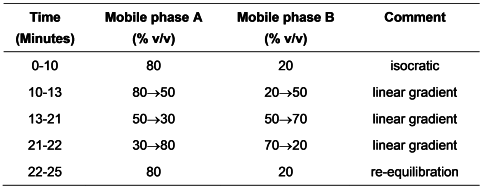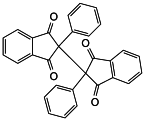Phenindione Tablets
Action and use
Oral anticoagulant (indanedione).
Definition
Phenindione Tablets contain Phenindione.
Content of phenindione, C15H10O2
95.0 to 105.0% of the stated amount.
Identification
Tests
Dissolution
Comply with the requirements for Monographs of the British Pharmacopoeia in the dissolution test for tablets and capsules, Appendix XII B1.
Calculate the total content of Phenindione, C15H10O2, in the medium from the absorbances obtained and using the declared content of C15H10O2 in phenindione BPCRS.
Related substances
Carry out the method for liquid chromatography, Appendix III D, using the following solutions prepared immediately before use.
Mobile phase A
10 volumes of acetonitrile, 10 volumes of a 1.36% w/v dipotassium hydrogen phosphate solution previously adjusted to pH 3.0 with orthophosphoric acid and 80 volumes of water.
Mobile phase B
10 volumes of water and 90 volumes of acetonitrile.
When the chromatograms are recorded under the prescribed conditions, the relative retentions with reference to phenindione (retention time, about 7 minutes) are: impurity 5, about 0.2; impurity 3, about 0.4; impurity 1, about 0.6; impurity 4, about 1.7; impurity 2, about 2.4.
The test is not valid unless, in the chromatogram obtained with solution (4):
the resolution between the peaks due to impurity 3 and phenindione is at least 6.0;
the resolution between the peaks due to phenindione and impurity 4 is at least 8.0.
In the chromatogram obtained with solution (1):
the area of any peak corresponding to impurity 1 is not greater than the area of the principal peak in the chromatogram obtained with solution (3) (1.5%);
the area of any other secondary peak is not greater than half the area of the principal peak in the chromatogram obtained with solution (2) (0.5%);
the sum of the areas of all the secondary peaks is not greater than twice the area of the principal peak in the chromatogram obtained with solution (2) (2.0%).
Disregard any peak with an area less than the area of the principal peak in the chromatogram obtained with solution (5) (0.1%).
Assay
Weigh and powder 20 tablets. Carry out the method for liquid chromatography, Appendix III D, using the following solutions prepared immediately before use.
Solution A 2% v/v glacial acetic acid in acetonitrile.
40 volumes acetonitrile and 60 volumes of 0.68 % w/v potassium dihydrogen phosphate previously adjusted to pH 3.5 with orthophosphoric acid.
The test is not valid unless, in the chromatogram obtained with solution (3), the resolution between the peaks due to impurity 3 and phenindione is at least 6.0.
Calculate the content of C15H10O2 in the tablets using the declared content of C15H10O2 in phenindione BPCRS.
IMPURITIES
The impurities limited by the requirements of this monograph include:





